Perennial undersized carnation: description, varieties, care recommendations
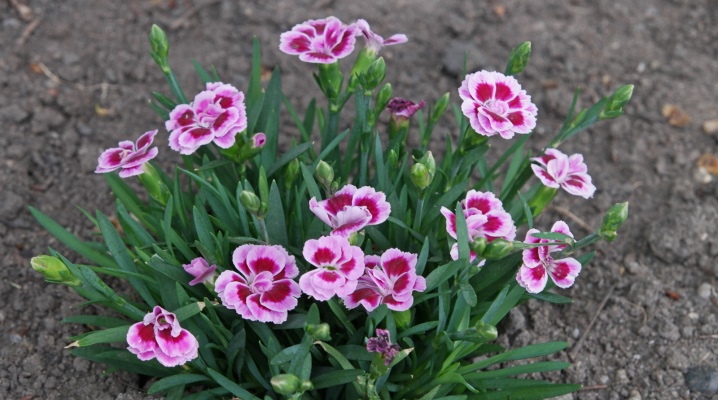
Garden carnation species are some of the most beautiful plants that can beautify any landscape. Low-growing perennial varieties of garden carnations are very popular due to their spectacular appearance, unpretentiousness in care and wintering. A variety of dwarf varieties - terry, bush, border, multi-colored makes it possible to choose mini-carnations for every taste.
Description
A low carnation looks like a short bush, the maximum height of garden carnations is 60 cm, but low-growing varieties usually do not exceed 30 cm. Inflorescences are varied in shape and size: there are large, lush ones, there are miniature, laconic ones. The inflorescence can contain up to 5 flowers. A perennial carnation will adorn the garden for several years without replanting. Almost all varieties look very impressive in design, well suited for decorating curbs, garden paths, alpine slides, flower beds. Propagated by cuttings, dividing the bush, seed method.
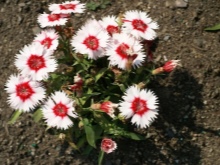
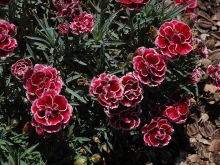
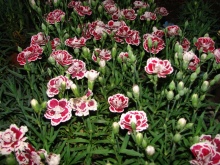
Varieties and varieties
Low-growing carnations are perennial herbaceous plants, which are represented by a huge variety of varieties, species. There are more than two dozen varieties of this plant, however, the most common are 5. They, in turn, have a fairly extensive subspecies and varietal classification. In general, all varieties are quite unpretentious, although there are some nuances and features.
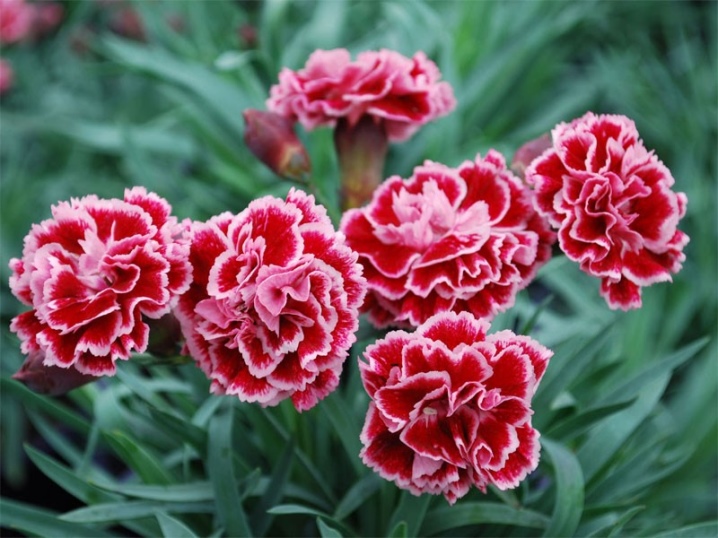
Cirrus:
- undersized perennial, maximum height up to 30 cm;
- flowering of a single type;
- colors: snow-white, red, pink in different variations;
- rich varietal variety;
- foliage is gray-green or blue with greenery;
- this species includes iosotis and semperflorens.
One of the most spectacular varieties of feathery carnation is Terry Carpet. Differs in high decorativeness, grows well, forming a kind of carpet. The aroma is pronounced, the flowering is terry.
Great for decorating borders, rockeries, flower beds, flower beds.
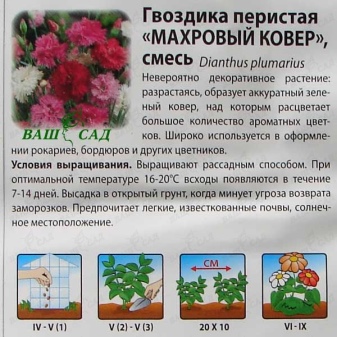
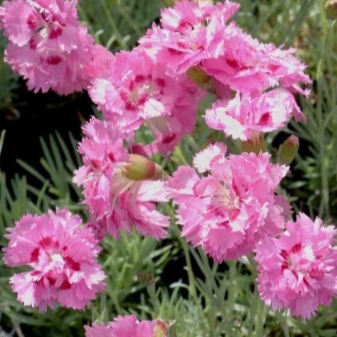
Plume:
- another name is musky;
- maximum height - up to 50 cm;
- flowering terry type;
- spicy, strong aroma;
- varied colors.
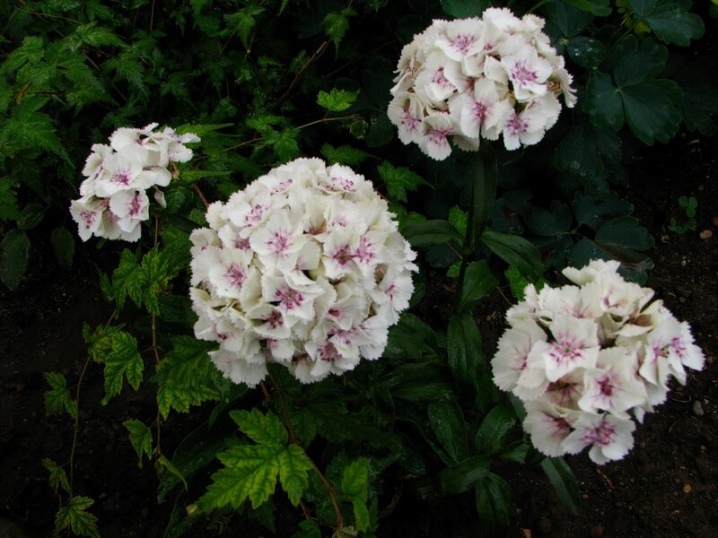
Sandy:
- rather miniature, up to 30 cm;
- feather-type petals, fringed;
- unpretentious, loves the sun;
- great for decorating curbs, alpine slides, retaining walls.
The variety of this type of "Nostalgia" is distinguished by a high decorativeness - low bushes, strewn with snow-white miniature flowers, decorated with fringe.
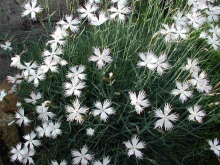

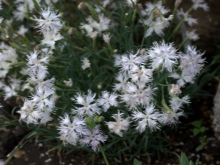
Herb:
- low bushes, up to 25 cm in height;
- foliage of an elongated type of rich green tone;
- there may be a reddish tint on the leaves;
- the variety of colors includes scarlet specimens with a dark rim, dark pink, carmine, with light variegation;
- within this species, many varieties and hybrids have been bred.
A very beautiful representative of this group is the Moulin Rouge. This vibrant blend has an incredible delicate scent and a beautiful pink color. It blooms very profusely, suitable for decorating mixborders, borders, garden paths.
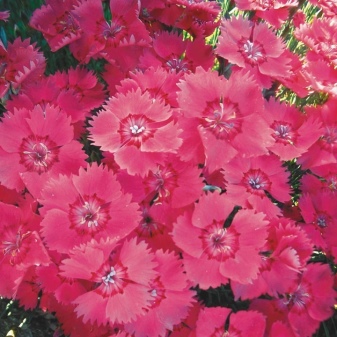

Dutch:
- non-capricious, showy plant;
- bloom with terry, large;
- a lot of greenhouse varieties;
- high degree of decorativeness;
- suitable for decorating any landscape elements.
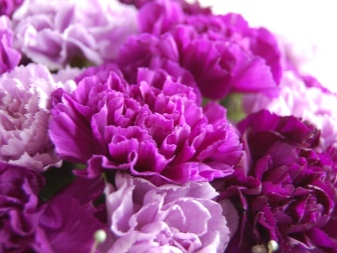
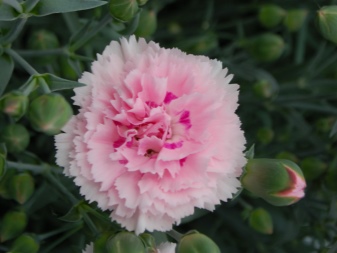
Allocate a series "Lilipot mix", which includes a number of multi-colored mini-carnations. Distinctive features:
- maximum height 25 cm;
- type of bush - branched;
- there is no need for pinching;
- different color;
- you can purchase a separate variety or mix;
- Terry flower, large.
Among the varieties of the series are especially popular: "Scarlet" - white, lavender pink, light purple, orange, lilac and yellow carnations. "Scarlet" is a low bush carnation with a spectacular color, in the center with a raspberry and delicate pink border, decorated with a fringe.
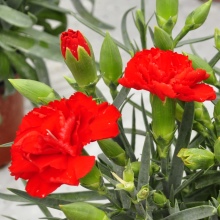


Hybrid dwarf carnation species are also extremely common.
- "Breath of Love" - rather high grade, about 40 cm, laconic flowering, petals have an uneven color, narrow type, dissected, delicate aroma;
- Spring Beauty - maximum height - up to 30 cm, flowering with terry, pink tint, pronounced aroma;
- "White Leads" - maximum height 25 cm, snow-white bloom, petals with terry, scalloped edging, strong aroma;
- "Sam Barlow" - snow-white inflorescences, contrasting calyx, brown, pronounced smell;
- "Shabo" - a spectacular hybrid subspecies with large flowers, can be with double or semi-double, varied color: pink, yellow, red, snow-white.
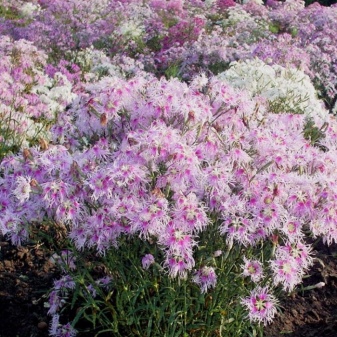
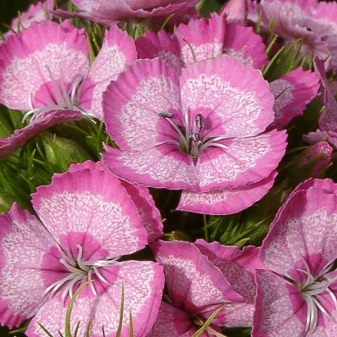
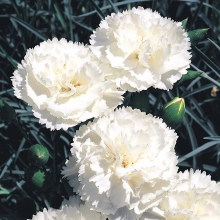

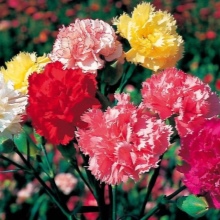
Site and soil selection
In order for the plant to please you with spectacular flowering, healthy appearance and development, you must choose the right place for planting and correctly assess the soil composition. If this is not done, the flower will not receive enough light, nutrition, moisture and will develop poorly. Optimal soil type:
- lightweight, with good air permeability, loose;
- neutral or slightly acidic type;
- containing humus.
Acidic soils are neutralized with lime, ash, and if the soil is heavy, its quality is improved with peat, perlite. For disembarkation, it is best to choose a sunny area where partial shade appears in the afternoon. Too shady areas are not suitable, the leaves will look faded, the abundance of flowering will decrease. If you are planting carnations in pots, pots, containers, you should protect them from direct sunlight. It is necessary to protect mini-carnations from moisture-loving neighbors, otherwise moisture stagnation will form, harmful to flowers.
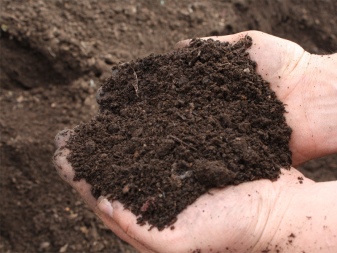

When and how to plant?
In a permanent place, this plant in the form of seedlings is planted as follows:
- holes are formed, with an interval of at least 15 cm;
- maximum depth - the size of the lump with roots;
- compost is applied, sand with a layer of about 3 cm;
- seedlings are lowered into the hole, covered with soil, compacted;
- the planting should be moistened and mulched.
A drainage layer is needed in order to prevent stagnation of water, since excess moisture is dangerous for the flower. If you are planting seeds in open ground, you should also do this in May, deepening the seedlings about 1 cm into the grooves.
Shelters should be created from above with polyethylene to create a greenhouse effect before germination.
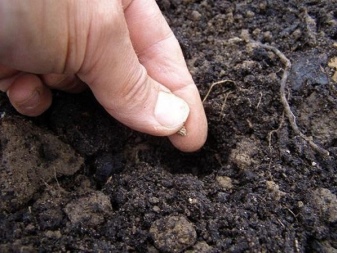

Care features
At first, when the plant is just ripening, the seedlings need to be thinned out, and the weeds need to be weeded. Mature plants do not need to be weeded. In general, caring for this representative of the flora is simple. It is enough to follow a few growing rules.
Moisturizing:
- for perennial mini-carnations, dryness is preferable to stagnant water;
- excess moisture must not be allowed;
- watering should be moderate;
- moisten the soil only after the top layer has dried;
- watering the root, water should not get on the foliage;
- it is necessary to loosen the soil after the procedure.
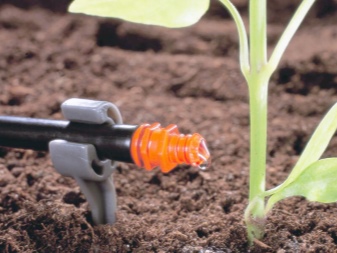
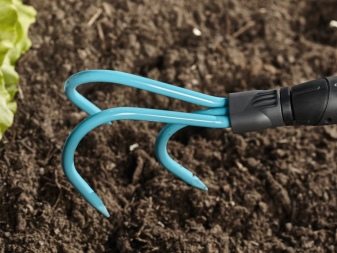
Fertilizer:
- matted organic compounds are introduced during planting and transplanting;
- mineral dressings are introduced in the spring, before the start of the growing season, after pruning;
- if the plant is not in the open field, more frequent feeding is required.
Post-flowering activities:
- if you pinch faded inflorescences, this will provoke abundant flowering;
- when the carnations completely fade, they are cut off, leaving a stem height of about 10 cm;
- bushes, which have grown a lot, should be transplanted, for this a mature bush is dug up, divided and planted, the procedure falls on the end of summer-beginning of autumn.
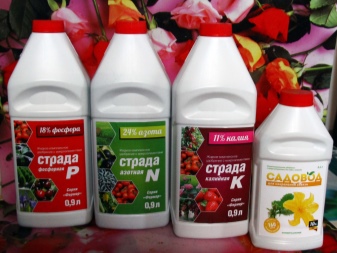

Reproduction
Even an amateur can cope with this process; propagating mini-carnations is quite simple, and in any way. Can choose:
- seed method;
- dividing the bush;
- grafting.
Experts recommend using mixes and mixes if the goal is a multi-colored carpet. Growing seedlings from seeds is quite simple:
- seeds are sown in a container in March;
- you can soak them the day before disembarkation;
- seeds are laid out in loose loamy soil, after moistening the soil;
- cover with sand from above;
- then it is necessary to organize a shelter with glass or polyethylene;
- containers are placed in the dark with a comfortable temperature from 17 to 20 C;
- in about a week, the seeds will sprout, the shelter is removed;
- boxes are placed on windows and sprayed;
- after about a month, the seedlings can be hardened;
- after which they are planted in a pre-prepared place of a constant type.
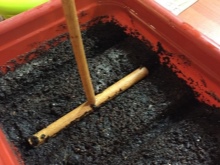

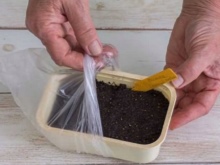
Dividing a bush is the easiest way. You need to select a large, mature bush, carefully dig it up and divide it into parts with a knife. Make sure that growth points are at each division. Then they are seated in selected places and moistened.
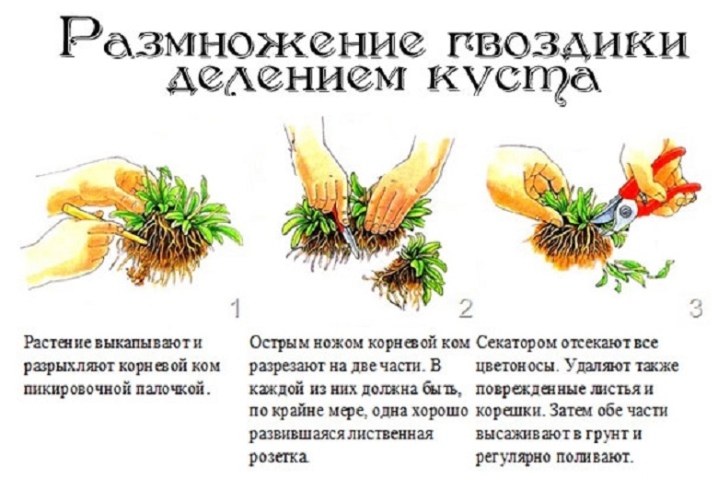
Cutting is the most difficult method, which is used only for breeding highly decorative, valuable carnations. Algorithm of actions:
- the shoot is cut off;
- rooted in a box with a sand-peat mixture;
- the substrate is preliminarily watered;
- after rooting, they are planted, this process takes about 2 months.
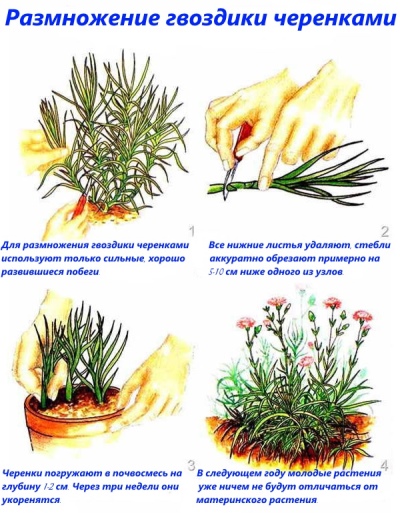
Diseases and pests
Low-growing carnations have good disease resistance. However, improper growing conditions, especially stagnant moisture and a large amount of nitrogen, negatively affect the state of the plant, weaken it. Weeds that are not removed in time, with the development of carnations, provoke the formation of fungal, viral diseases, bacteria, and rot. If you notice light or brown spots with red edging, the fungus has overpowered the carnation. It is necessary to treat the plant with fungicidal compounds. Topaz, Fundazol are well suited.
Insect attacks are not very frequent; spider mites are most dangerous for carnations. They form a kind of grid below the foliage. Thrips also often attacks carnations. The main symptom is the appearance of white with silver spots on the buds and foliage. Another pest is aphids, which suck sap from carnations, covering the stems with mucus. To get rid of insects, use insecticide formulations. The following types do well:
- Fitoverm;
- Vermitek;
- Actellik;
- Aktara.
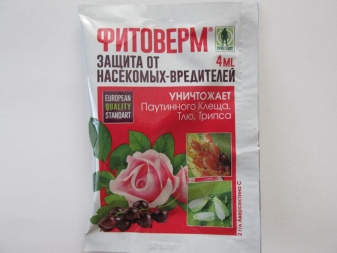

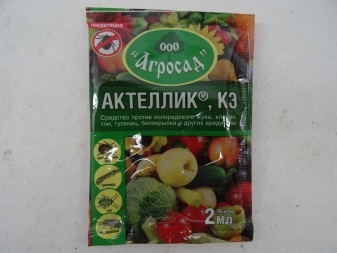
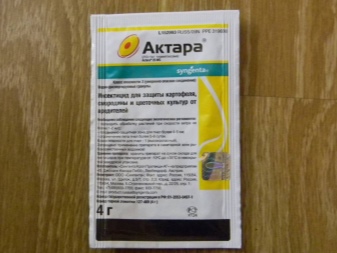
See below for proper carnation care.







































































































The comment was sent successfully.